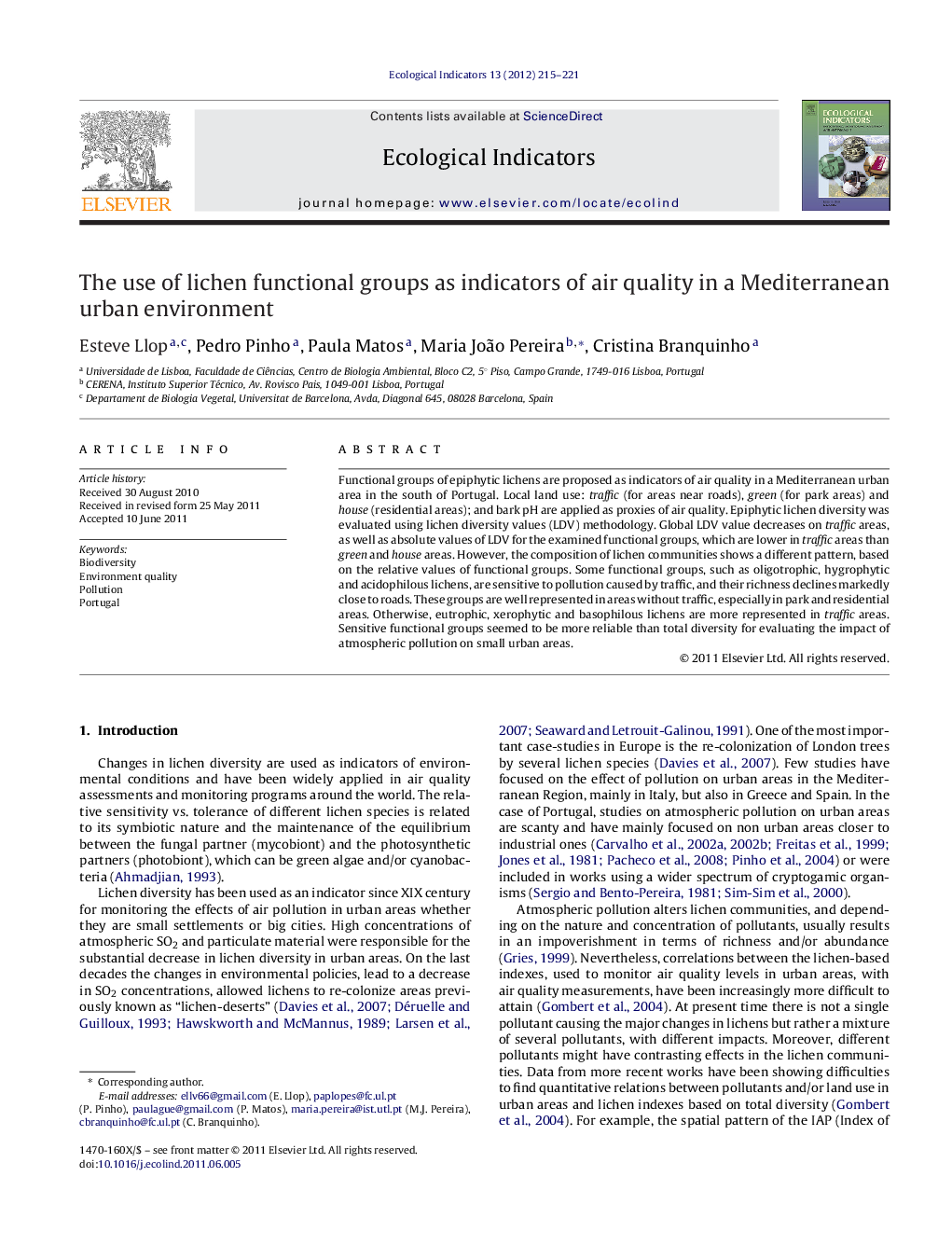| Article ID | Journal | Published Year | Pages | File Type |
|---|---|---|---|---|
| 4374016 | Ecological Indicators | 2012 | 7 Pages |
Functional groups of epiphytic lichens are proposed as indicators of air quality in a Mediterranean urban area in the south of Portugal. Local land use: traffic (for areas near roads), green (for park areas) and house (residential areas); and bark pH are applied as proxies of air quality. Epiphytic lichen diversity was evaluated using lichen diversity values (LDV) methodology. Global LDV value decreases on traffic areas, as well as absolute values of LDV for the examined functional groups, which are lower in traffic areas than green and house areas. However, the composition of lichen communities shows a different pattern, based on the relative values of functional groups. Some functional groups, such as oligotrophic, hygrophytic and acidophilous lichens, are sensitive to pollution caused by traffic, and their richness declines markedly close to roads. These groups are well represented in areas without traffic, especially in park and residential areas. Otherwise, eutrophic, xerophytic and basophilous lichens are more represented in traffic areas. Sensitive functional groups seemed to be more reliable than total diversity for evaluating the impact of atmospheric pollution on small urban areas.
